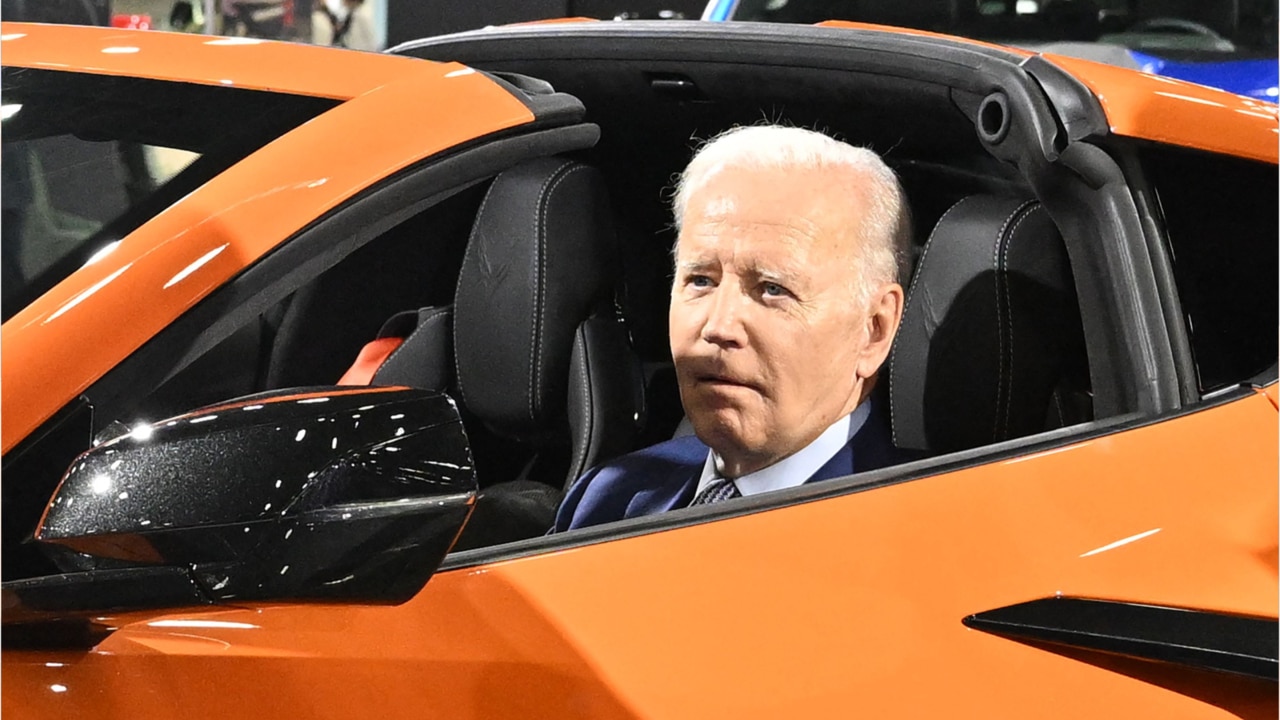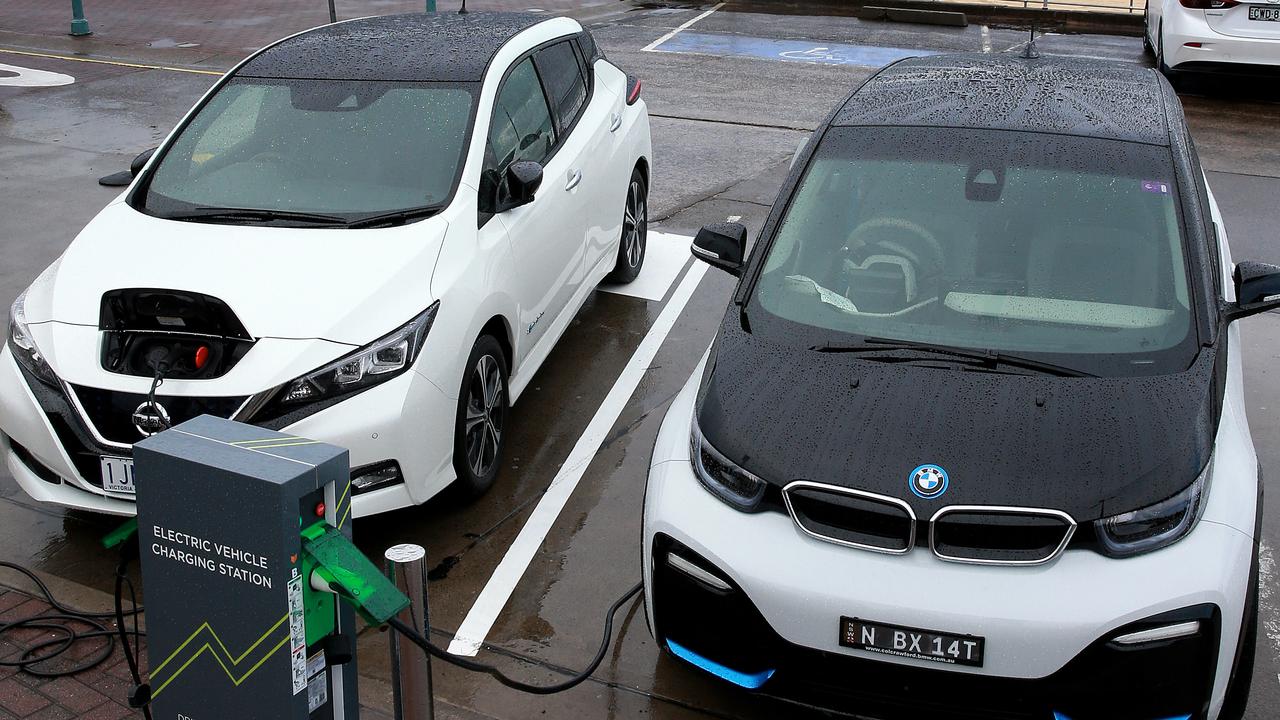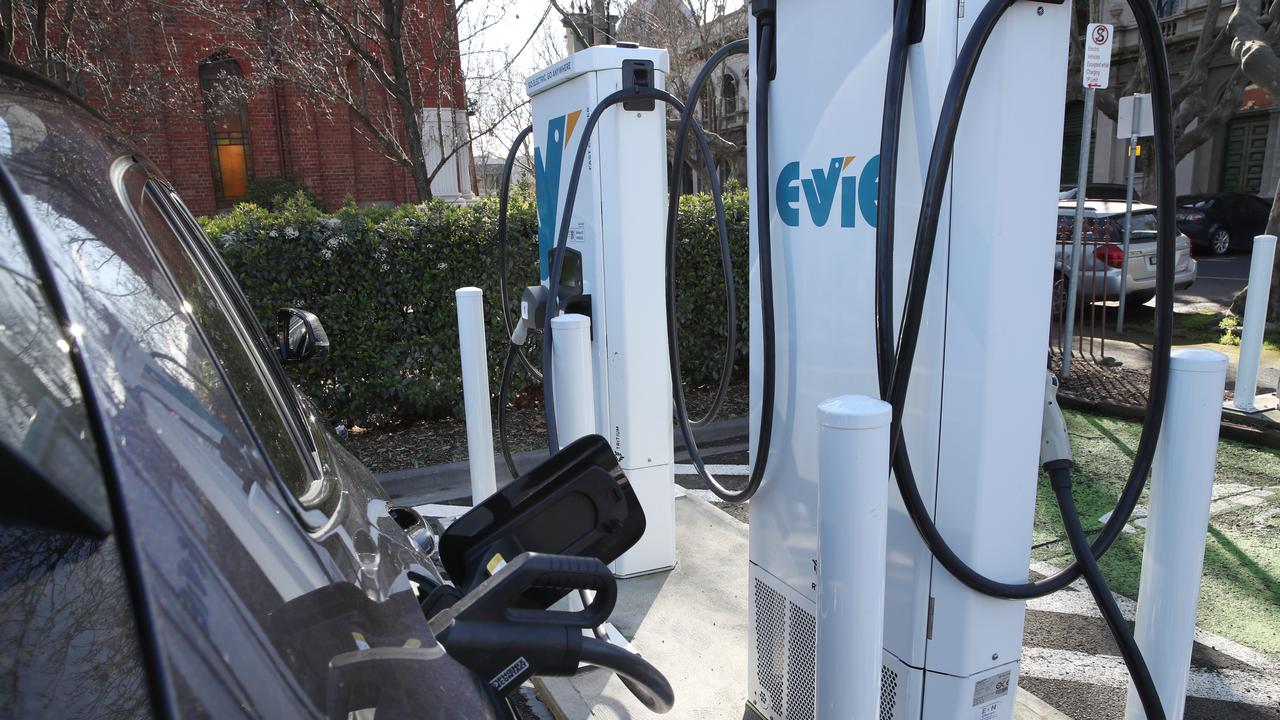Parking Australia calls for change over on-street electric vehicle charging
Calls are being made for urgent change over an issue affecting around three million households across the country.

Australia‘s peak parking body has called for urgent change over an issue affecting around three million households across the country.
It comes after images emerged of the extreme measures an electric vehicle owner had go to take to charge their car.
Photos and vision shared by 2GB showed a long orange power cable snaking its way all the way down from the home to the car parked out on the street.
The surprising scene was spotted on a suburban Manly street on Friday morning.
The cord is long enough that it stretches from the house, down the front steps, along the driveway, across the fence and onto the footpath before reaching the road and car.
A cable protector was placed on the footpath to shield the cord, while it appears it is looped around the fence when it is not in use.
Parking Australia chief executive Stuart Norman said it was a serious issue impacting millions across the country.
“We know that on-street charging is an issue for about three million Australian households,” he told NCA NewsWire.
“People plug their car in the same way they plug their phone in. We know from people who have a driveway and garage that’s exactly what they do.
“But people who don’t have a driveway can’t do that.”
Mr Norman said situations like the one seen in Manly can be “solved and it can be solved quite well”.
He called for public electric charging stations to be set up on streets across that country, which would run like parking meters because “effectively that‘s what it is”.
“You put a charger on the street, very much like a parking meter,” Mr Norman said.

“You then have software for people to pay. It can’t be free, people pay for petrol.
“You have a number of them in streets, you don‘t just have one in someone’s house. And it must be a public asset, it can’t be private.
“Link it to enforcement, so if someone stays too long the council will have to fine them.”
Mr Norman has tried to raise his ideas and concerns with strategy makers and politicians like Energy Minister Chris Bowen and Teal MP Monique Ryan.
He openly said that “most of them are gonna get it wrong”.
“We‘ve tried to engage with political leaders on this and we’ve had several that are just too busy to even meet with us,” he said.
“We want to engage with political leaders to tell them how it can be done because otherwise they’re gonna make mistakes.
“There’s a lack of understanding of how the electrical distribution network and a lack of understanding of people’s habits.”

2GB breakfast show host Ben Fordham called Friday’s scenes in Manly “bizarre” and “strange”.
“In order to charge it, the owner has to run an enormous power cord from their property all the way out onto the road,” he said.
“It's one of the longest extension cords I’ve ever seen and that’s when the person is lucky enough to have found a park right outside their home.
Local man Mark said the cables were a “hazard” risk.
“This is going to be a big problem as a trip hazard as well as an electrical hazard to any children,” he told 2GB.
Fordham said it showed the issues Australians could encounter as electric cars become more prominent.
“We just need to work out in Australia how we are going to charge all of these vehicles,” he said.
“I reckon that only 30 per cent of people in my street have a garage, I’d say 70 per cent do not.
“If we're reducing the driveways and reducing the garages, there are going to be fewer points to charge your electric vehicle, which pushes them out on the street.”

Transport for NSW advises electric vehicles can be charged at home, work or in different public locations like highways and supermarkets.
Generally, level 1 electric vehicle supply equipment is used at a home and can take anywhere between five to 16 hours to charge.
A range of public charging stations are littered across NSW that drivers generally use if they do not have off-street parking.
Beyond using long extension cords, electric car owners have also been known to attach chargers to nearby street light poles that have spots for them.

Climate Change and Energy Minister Chris Bowen has expressed his desire to see more electric vehicles come into Australia, to give the public an alternative to traditional vehicles.
“Giving Australians better access to options which allow them to never lift the nozzle on a petrol pump again is a good cost of living measure,” Mr Bowen said last month.
“There are many consumers who would be interested in buying an EV – but even if they could access the limited stock available, price sends them to petrol or diesel models.
“We run a real risk of becoming a dumping ground for cars that are expensive to run and at the back of the global pack.”
Australian uptake of new low-emissions cars is five times lower than the global average, while there are just eight models of electric vehicles to choose from across the country.
Tesla chair Robyn Denholm recently said Australia was “missing out” by not being a key player in the electric vehicle industry.
“No country has more to gain from the world moving to electric vehicles than Australia … we can be a renewable energy superpower,” she told the National Press Club on Wednesday.
“Australia is one of the few countries in the world with all the critical minerals required for lithium ion batteries.
“Australia is missing out on much of the value-add from this supply chain because, to date, the focus has been on shipping the raw materials offshore.
“Australia should aim to do the refining, the battery cell manufacturing, and the vehicle manufacturing. We can and should do all of that.”

It comes after Climateworks Centre project manager of transport Rachel Lynskey also said Australia was lagging behind the rest of the world on electric vehicle uptake.
“We increased from 0.8 per cent of new cars in 2020 to 2 per cent being electric vehicles in 2021,” she told a senate committee last month.
“EV uptake is tracking at around 10 per cent globally and as high as 70 per cent in Norway.
“Achieving higher EV uptake is really possible with the right national policies in place. This includes policies to reduce the cost of EVs and boost supply into the Australian market.
“While we are behind global uptake, Australia can really draw from successful EV policies around the world.”
Ms Lynskey said while sales were slowly increasing, they could be improved by reducing the upfront cost of electric vehicles and putting direct subsidies, discounts or exemptions on taxes in place.
So far, the government has removed the 5 per cent import tariff and the fringe benefits tax for eligible electric vehicles.
It is working towards transitioning 75 per cent of new commonwealth vehicles to electric by 2025.



